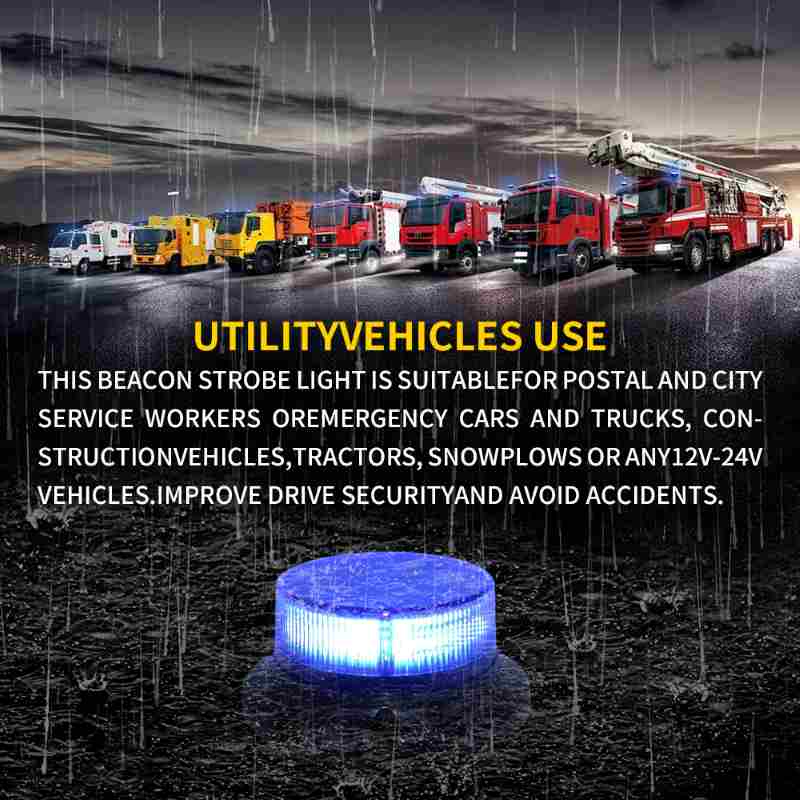Register an account | Forget the password
Become our member and enjoy discounts on purchases in this mall
The emergency vehicle light flasher plays a vital role in ensuring road safety by alerting drivers and pedestrians to the presence of emergency vehicles. However, the color of these flashing lights significantly impacts how effectively they convey urgency and influence human behavior. This article explores the purpose and psychology of various light colors, global usage differences, and their overall impact on road safety.
 1. The Purpose of Different Colors of Lights
1. The Purpose of Different Colors of Lights
Emergency vehicles use a variety of light colors, each serving a specific purpose:
· Red: Universally associated with danger and urgency, red lights signal immediate action, such as stopping or yielding. They are often used by ambulances and fire trucks.
· Blue: Blue lights are highly visible, especially at night, and are commonly used by law enforcement to convey authority and demand attention.
· White: White lights provide a strobe-like effect, increasing visibility in dark or low-light conditions. They are often used in combination with other colors to enhance contrast.
· Yellow (Amber): Yellow lights indicate caution and are used by slower-moving or stationary vehicles like tow trucks or construction vehicles.
The emergency vehicle light flasher uses these colors strategically to ensure clear communication with other road users.
2. The Psychological Impact of Color
The choice of color in an emergency vehicle light flasher directly influences driver and pedestrian behavior:
· Red triggers a sense of danger, prompting drivers to stop or pull over.
· Blue creates a sense of urgency and authority, encouraging immediate compliance.
· White enhances visibility, especially in peripheral vision, drawing attention quickly.
· Yellow promotes caution, helping drivers anticipate slower speeds or obstacles.
By leveraging these psychological associations, an emergency vehicle light flasher ensures faster reaction times and reduces the risk of accidents.
 3. Differences in Color Usage Around the World
3. Differences in Color Usage Around the World
The use of colors in emergency vehicle light flashers varies across regions:
· United States: Red and blue lights are widely used for police, fire, and ambulance services. White lights are often added for extra visibility.
· Europe: Blue is the primary color for emergency services, while amber lights are common for roadside assistance vehicles.
· Asia: In some countries, green lights are used for certain emergency vehicles to distinguish them from standard services.
These variations reflect cultural differences and traffic regulations, ensuring the emergency vehicle light flasher meets local safety standards.
4. Research Data: Which Light Color Works Best in Bad Weather?
Studies have shown that certain colors are more effective under specific conditions:
· Blue lights perform well at night due to their high visibility against darker backgrounds.
· Amber lights are less distracting and work better in foggy or rainy conditions.
· Red lights are highly visible during daylight but can lose effectiveness in fog or heavy rain.
· White lights enhance overall visibility but may cause glare in some situations.
A multi-color emergency vehicle light flasher often combines these colors to maximize visibility in various weather conditions, ensuring road safety at all times.
 5. The Actual Impact on Improving Road Safety
5. The Actual Impact on Improving Road Safety
The use of a well-designed emergency vehicle light flasher significantly reduces response times and enhances road safety:
· Driver Awareness: Flashing lights alert drivers to emergency vehicles, reducing the likelihood of collisions.
· Pedestrian Safety: Highly visible lights ensure pedestrians can quickly identify approaching emergency vehicles.
· Traffic Management: Flashers help clear the way for emergency responders, minimizing delays.
By integrating advanced LED technology and multi-color flash patterns, the modern emergency vehicle light flasher offers improved efficiency and adaptability, ensuring maximum safety on the road.
Conclusion
The color of an emergency vehicle light flasher is not just a design choice—it’s a critical factor in road safety. By understanding the purpose and psychological effects of different light colors, and considering regional and weather-specific factors, manufacturers can create more effective products.
For emergency responders and fleet managers, investing in a high-quality, multi-color emergency vehicle light flasher is essential for optimizing visibility, ensuring compliance with regulations, and ultimately saving lives.